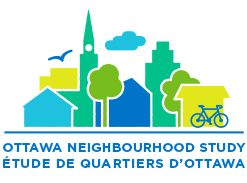How Our Brainwaves React to a Vibrant Neighbourhood
January 26, 2015
Thanks to 2,450 electrodes and a few dozen volunteers, researchers finally know what happens to your brain when you walk down James Street in Hamilton. The results from the final portion of Cobalt Connects’ Expressing Vibrancy study were released Wednesday, giving Hamiltonians a look at how they feel about their neighbourhoods at the brainwave level.
Chief connector and cultural strategist Jeremy Freiburger and his crew spent days at McMaster University’s Live Lab last year to test physiological responses to data collected in eight Hamilton neighbourhoods. The Live Lab is a one-of-a-kind facility that’s used to test how people react to visual and auditory information. Volunteers in the study were hooked up to devices that measure brainwaves, heart rate, sweat levels and breathing patterns while viewing video, pictures and listening to sounds from the eight neighbourhoods. Their biological responses were then catalogued to try to identify how people react to something that is supposedly “vibrant.”
So which neighbourhoods did the best? Cobalt isn’t telling. The data did show that neighbourhoods three and six (whichever those were) showed deviations for theta, alpha and delta brainwaves – which Cobalt says means that participants found those neighbourhoods “more engaging.”
While some study participants were having their brains picked, another set of people were watching videos from each neighbourhood armed with an iPad. As they watched, participants were instructed to move a slider on their tablet up or down as they felt the “vibrancy” of the scene changed.
In each neighbourhood there were peaks and valleys where the audience rated something more or less vibrant. Some neighbourhoods remained above the average for the duration of the study, while others came in below. Some crisscrossed from one side of the line to the other depending on what participants were seeing.
So what sorts of things did people respond to? Increased pedestrian activity helped neighbourhoods rank higher, as did specialized architecture and natural elements like trees. Other aspects dragged ratings down, like a lack of greenery, vacant store fronts, as well as large intersections and increased traffic noise. The style of architecture are associated with an increased rating from 10-50%, with differing ratings for set-backs, period or heritage, amount of window, etc. A range of natural elements are also associated with an increased rating to varying degrees
“Cobalt has been watching a shift in cultural definitions over the past few years and this study has certainly solidified and verified some of that,” Freiburger said. “We feel quite strongly that natural elements and access to cultural landscapes must become a more firm part of our cultural definition.”
Cobalt Connects’ next move is to add 10 non-Hamilton neighbourhoods to the mix and then do another more specialized round in the Live Lab for further study.
[Adapted from a CBC News post by Adam Carter, 21/01/15]
